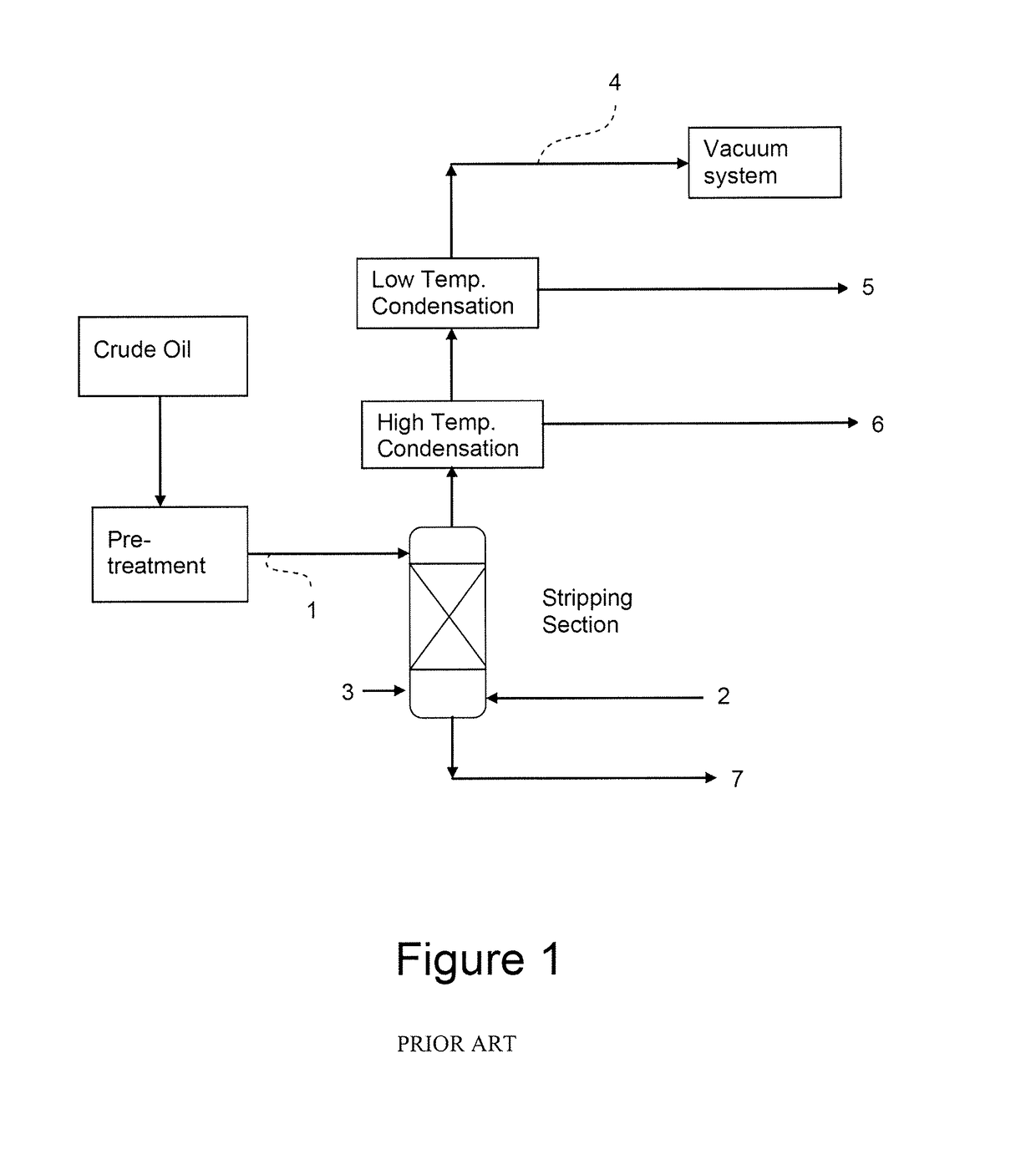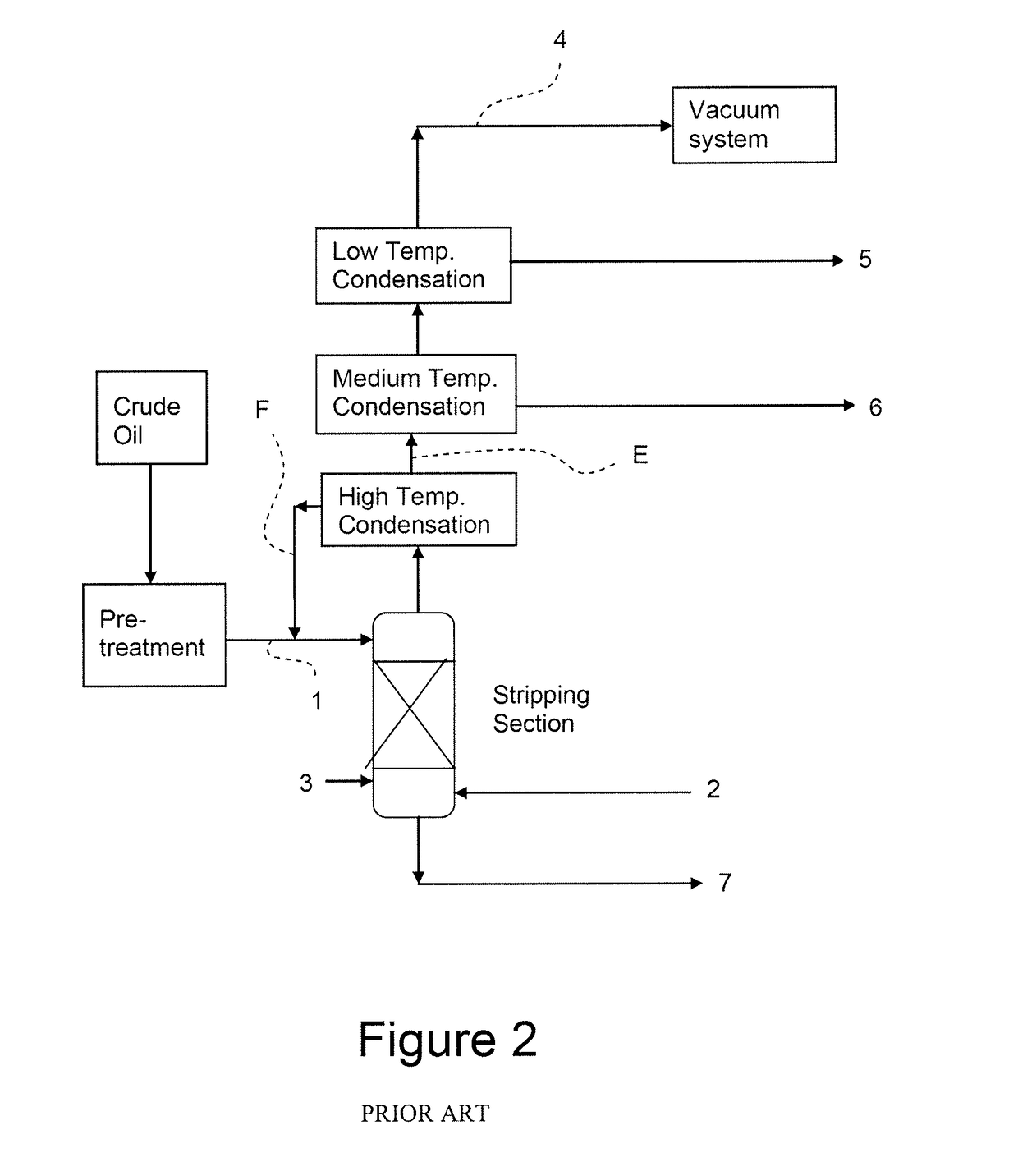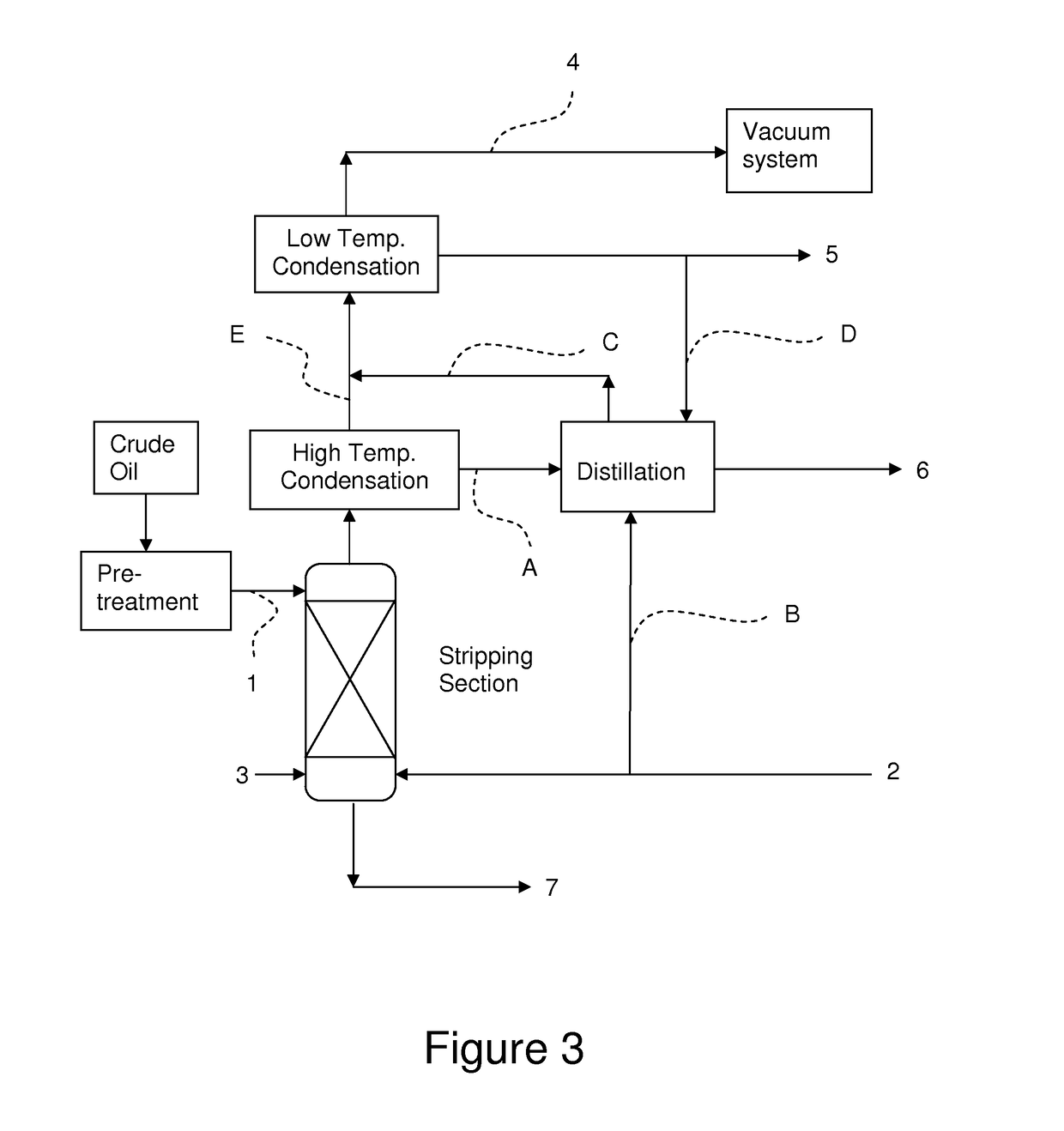Process for treating fats and oils
a technology for fats and oils, applied in the field of fats and oils processing, can solve the problems of increasing the level of dag, reducing the value of main product, and reducing the amount of oil
- Summary
- Abstract
- Description
- Claims
- Application Information
AI Technical Summary
Benefits of technology
Problems solved by technology
Method used
Image
Examples
example 1 u
6,750,359
[0047]This comparative test was performed according to the simplified flow diagram in FIG. 1 and the mass balance shown below in Table 1. The mass balance represents a 1,200 ton oil / day processing case, typical for a case of so called “physical refining”, where free fatty acids are removed from the oil by stripping using steam under vacuum. The oil composition used is typical for soybean oil. In Example 1 the oil is fed to the stripper column at 260° C. and 1% stripping steam relative the amount of pre-treated oils applied for stripping. The high temperature condensation takes place at 160° C. and low temperature condensation at 55° C., in both cases taking place by scrubbing the vapours with an oily condensate generated from the vapours at those temperature levels. The vacuum level at the top of the cold condensation stage was in this example set at 2.5 mbar. The mass balance was established using a process simulator (PRO / II version 9.1 from SimSci-Esscor) combined with a ...
example 2
, Comparative U.S. Pat. No. 6,750,359
[0052]The process in FIG. 1 and FIG. 3 were simulated and their mass balances compared at a temperature of 140° C. in the high temperature condensation stage. The distillation column was simulated with 4 stages and a bottom reboiler. 10 kg / hr of steam, corresponding to 3.5% of the condensate being fed to the distilling column) was used to assist stripping off the fatty acids. The reboiler was operated at 260° C. and the vacuum level in the top of the distilling column 3.2 mbar. 100 kg / hr of low temperature distillate was used as reflux for rectification section of the column. The feed stage was arranged such that the column had two stages for rectification and two stages for stripping.
[0053]The mass balance according to prior art at 140° C. in the high temperature condensation stage is summarized in Table 2, total mass balance 0.005 kg / hr, and the mass balance according to the invention at 140° C. in the high temperature condensation stage is sum...
PUM
| Property | Measurement | Unit |
|---|---|---|
| pressure | aaaaa | aaaaa |
| pressure | aaaaa | aaaaa |
| temperature | aaaaa | aaaaa |
Abstract
Description
Claims
Application Information
 Login to View More
Login to View More - R&D
- Intellectual Property
- Life Sciences
- Materials
- Tech Scout
- Unparalleled Data Quality
- Higher Quality Content
- 60% Fewer Hallucinations
Browse by: Latest US Patents, China's latest patents, Technical Efficacy Thesaurus, Application Domain, Technology Topic, Popular Technical Reports.
© 2025 PatSnap. All rights reserved.Legal|Privacy policy|Modern Slavery Act Transparency Statement|Sitemap|About US| Contact US: help@patsnap.com



